Are lab grown diamonds real? Yes. It’s a question asked by many as they explore the world of diamonds for their jewelry or engagement rings. In this comprehensive blog post, we’ll dive into the facts surrounding lab-grown diamonds, their formation, authenticity, identification, comparison to natural diamonds, alternatives, and expert recommendations. Get ready to discover the fascinating world of lab-grown diamonds and find the perfect gemstone for you!
Key Takeaways
-
Lab-grown diamonds are real and certified by the FTC & GIA.
-
They offer cost savings, value retention, and sustainability compared to natural diamonds.
-
Expert guidance can help you confidently choose the perfect diamond for your needs.
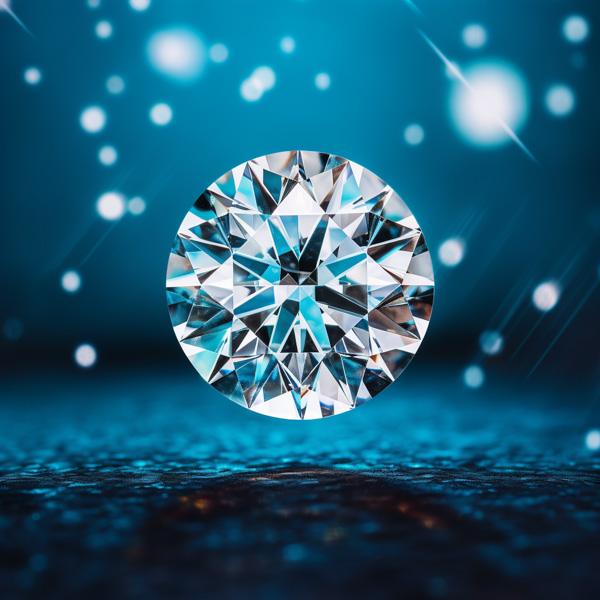
Understanding Lab Grown Diamonds
Lab created diamonds, or lab grown diamonds as they are also known, have seen a surge in popularity due to their similarity to mined natural ones. Created using either chemical vapor deposition (CVD) or high pressure and temperature (HPHT), these lab-made gemstones possess identical physical properties and compositions as those naturally formed—making them virtually indistinguishable from the real thing! The two primary methods used when it comes to creating synthetic jewels like this need examination so that we may gain an understanding of how exactly they differ from traditional diamond sourcing. If one wishes for more knowledge on why lab created diamond is grown is such a sought after option, then getting familiar with its formation processes along with particular characteristics could be highly advantageous.
Two GOODSTONE Petite Shared Prong Wedding Band with Radiant diamonds, made with Lab Grown diamonds
Lab Grown Diamond Formation Methods
Lab-grown diamonds are produced in two main ways: HPHT and CVD. The first process replicates the natural formation of diamond through intense heat and pressure, utilizing a specific type of graphite as its material base to form a crystal shape. On the other hand, production with CVD requires placing one diamond seed inside an environment full of hot gases. This allows for carbon layers to attach themselves to it so that it grows into a square shaped structure which is typically seen amongst created diamonds like these ones. Due to being cost-efficient while not harming our planet’s resources (when compared against their natural counterparts), lab grown stones have become popular choices over real gems.
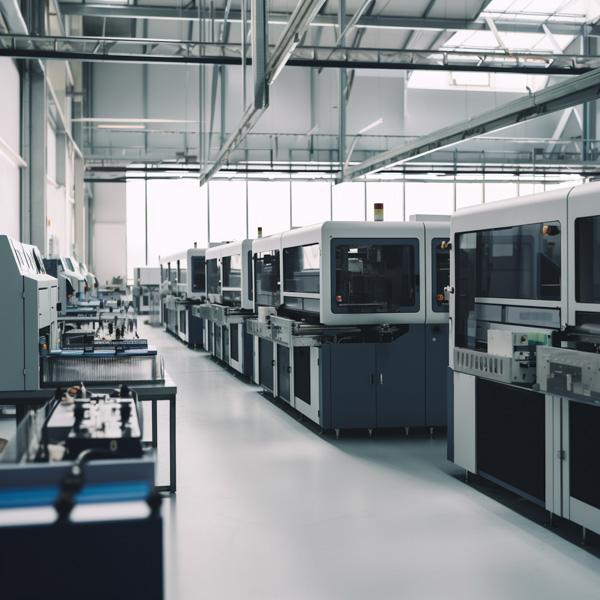
A Lab Grown diamond production facility
Properties of Lab Grown Diamonds
Lab grown diamonds, an appealing alternative to natural stones due to their comparable chemical and optical properties as well as the same hardness of crystal structure, produce a brilliance that can be seen in engagement rings. With spectacular fire, scintillation and brilliance - no different from those found in earth-mined diamonds - lab grown alternatives to diamond engagement ring will leave wearers mesmerized by its beauty. Some even come with characteristic traits unique among them too.
Lab-grown diamonds make for eye catching pieces similar yet distinct enough to set themselves apart from naturally sourced ones — making these particular gemstones desirable amongst buyers who wish only for exceptional quality items without compromising on ethical values!
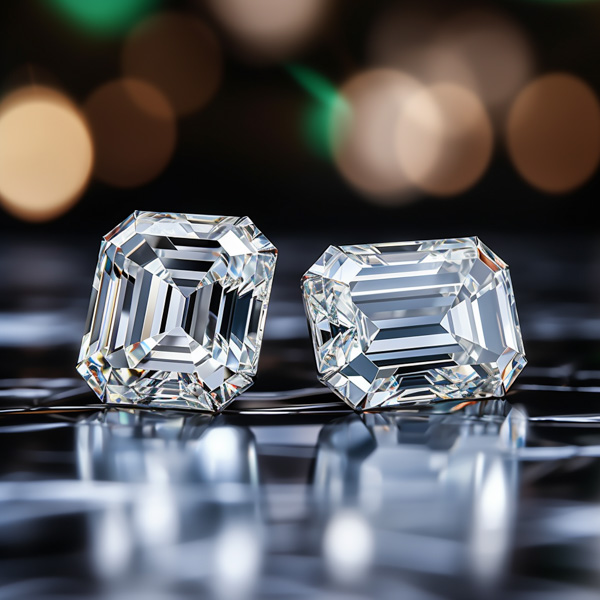
Two Lab Grown step cut diamonds
Authenticity of Lab Grown Diamonds
The Gemological Institute of America (GIA) and the Federal Trade Commission (FTC) have officially validated that lab-grown diamonds are real, with only their origin as a difference from natural ones. The FTC has declared these man-made gems to possess equal value just like any other diamond based on its ruling that states ‘a diamond is a diamond’ regardless of production method. GIA uses the same 4Cs criteria for grading both types -lab grown or natural – confirming they bear no distinction in terms worthiness either way.
This recognition given by respected entities clearly substantiates without a doubt how genuine lab grown diamonds really are. Reinforcing our faith in them all at once! Let us take an extensive look into what makes up this announcement made by FTC & understand more about why GIA takes such a perspective on growing crystals synthetically.
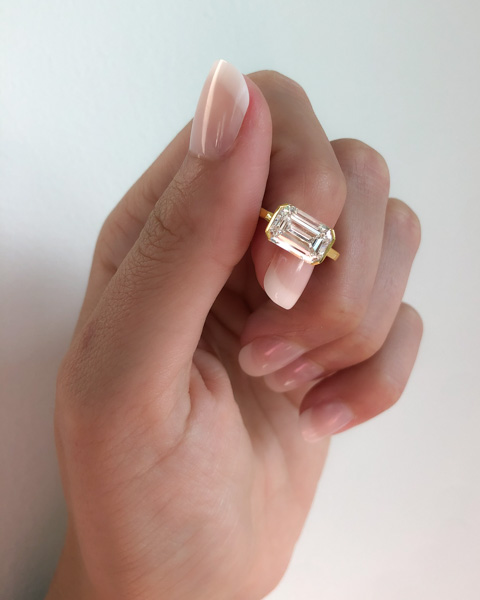
A 3 carat lab grown Emerald cut diamond in a GOODSTONE East West Half Bezel solitaire
Federal Trade Commission Ruling
The FTC’s declaration concerning lab-made diamonds has major implications for the diamond industry. Their characterization of a diamond as “a mineral consisting fundamentally of pure carbon crystallized in the isometric system” covers both natural and lab diamond and synthetic stones, Establishing that value isn’t just derived from origin.
This ruling by federal regulators identifies grown diamonds as genuine and valuable, bridging gaps between earth-mined gems and those developed in laboratories, offering shoppers assurance with regards to authenticity when it comes to their acquired lab created diamonds.
Gemological Institute of America's View
The Gemological Institute of America (GIA) is essential in verifying the credibility and authenticity of lab grown diamonds. Using their standard 4Cs criteria, they evaluate these gemstones –Color, Cut, Clarity, and Carat – identically to natural ones. This practice assists customers with trusting that such gems are indeed genuine. Allowing consumers everywhere to feel secure regarding both the quality as well as their value when purchasing them.
Via this same approach employed on artificially developed stones as it does with mined precious stones, the GIA displays its commitment to delivering accurate information about diamonds whether naturally found or laboratory crafted without bias. Consequently, individuals can purchase a diamond safe in knowing that either type will have been deemed trustworthy after assessment by experts at GIA standards.
The use of identical evaluation parameters for both lab-grown and natural diamonds exemplifies how committed the GIA is not only ensuring accuracy but also impartially relaying facts so purchasers may confidently obtain whichever type -lab grown or dug up from mines - while being aware there has been equivalent appraisal against high worldwide standards carried out before offering it on market shelves through organizations under consideration such as those licensed via the Gemological Institute of America’s certification program which assesses every stone based upon Color/Cut/Clarity &Carat weight
Identifying Lab Grown Diamonds
Identifying lab-grown diamonds can be done easily with the help of laser inscriptions, gemological laboratory testing procedures and individual report numbers. These identification methods are vital for providing assurance to consumers and industry insiders that they are getting an authentic product from a legitimate source in the market.
Gemologists have developed various techniques when it comes to recognizing lab grown stones. Such as engravings, advanced tests run by laboratories or simply giving them unique identifiers like codes assigned by certifiers. All these steps allow stakeholders involved in the process - suppliers, traders and buyers alike - to confirm their legitimacy before any transactions take place.
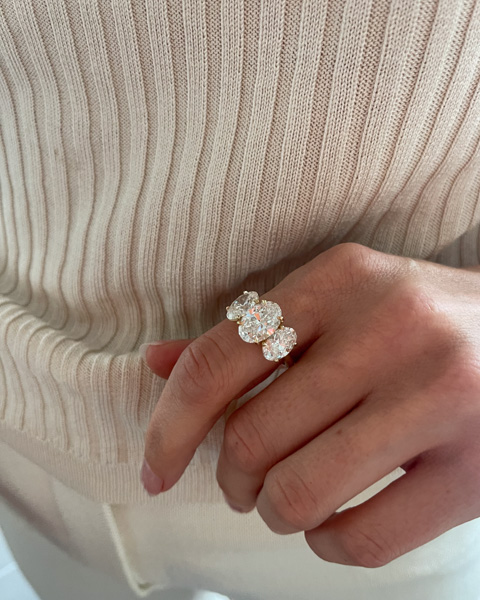
A GOODSTONE Triad ring with Lab Grown diamond Oval Brilliants
Laser Inscriptions and Lab Reports
Lab-grown diamonds have the unique capability of being inscribed with a special identification number on their girdles. This is done by laser, and usually alongside an inscription that reads “Laboratory-Grown”. By verifying these marks along with the diamond’s grades and measurements, jewelers are able to quickly identify lab grown gems.
Each artificial stone receives its own report number from gemological laboratories, which can be used for verification purposes as well, making it much easier to tell apart natural stones from those created in a laboratory setting.
Advanced Testing Methods
Lab-grown diamonds can be accurately identified by gemologists using advanced testing methods. Spectroscopy, HPHT (high pressure and high temperature ten) tests, UV scans, FTIR - Fourier transform infrared spectrometer measurements as well as energy dispersive X-ray analysis is used for identification purposes of lab growns in order to ensure the confidence shoppers need when buying a diamond created synthetically.
These techniques make sure that individuals are educated about their purchase and have enough information at hand regarding the origin of a certain laboratory produced stone before committing to it – thereby allowing them peace of mind while obtaining just what they desire in terms of beauty and quality from within those created diamonds available on the market today.
Comparing Lab Grown and Natural Diamonds
It is essential to assess the contrast in cost and value between lab-grown diamonds and natural ones, as well as how much more sustainable the former option is. Consider these key points: Lab-created stones are usually less expensive than their mined equivalents, plus they don’t need any mining process which makes them greener. On top of this advantage though, lies a disadvantage. Lab growns could devalue faster due to an overabundance available on market shelves. There’s a caveat – manufacturing for said type requires quite some power consumption amount too! Let us study those disparities between grown and natural diamonds regarding price point, sustainability factor or worth preservation when making decisions upon either one option or another.
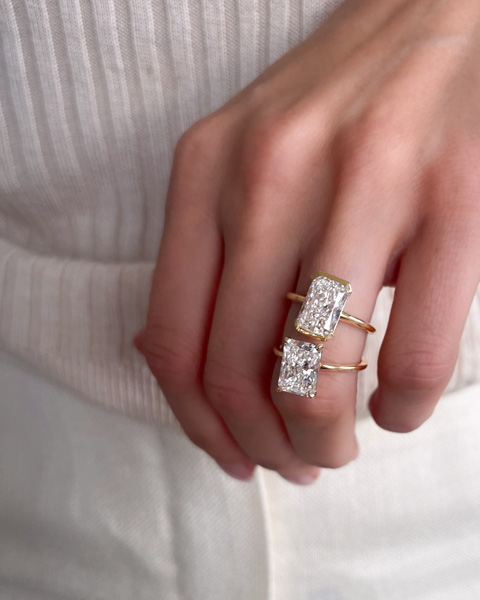
Two GOODSTONE engagement rings with Lab Created Elongated Radiant cut diamonds
Cost and Value
Lab diamonds, otherwise known as lab-grown ones, are typically much more affordable than natural diamonds and can lead to savings of up to 70% compared with a comparable mined rough diamond mine. This cost-effectiveness is due mainly to the absence of middlemen involved in the production process as well as the reduced labor needed for it.
People may question how valuable created diamonds really compare when set against their naturally occurring counterparts - they might not appreciate in worth like a natural one since there’s such an oversupply plus high energy usage during manufacture. Yet, if market stability remains consistent, then these grown stones should be able to maintain their value over time too. Lab created diamonds worth will be determined by the market.
Sustainability and Ethics
When searching for diamonds, lab-grown options can be a sustainable and ethical option to consider instead of natural mined ones. By utilizing the CVD process, which requires less energy than traditional mining techniques, there is also a lower carbon footprint associated with them—making it an environmentally friendly choice.
Lab-grown diamond consumers are not only making beautiful purchases for lab grown diamond engagement rings, but also making responsible decisions that have positive effects on both our environment and industry practices in the world of diamond sourcing. This presents people looking for jewels with another viable alternative apart from earth-mined stones while still meeting their quality expectations.
Lab Grown Diamond Alternatives
Lab-grown diamonds are quite fascinating to many, but alternatives such as moissanite and cubic zirconia exist. It’s important to understand that these substitutes lack the unique chemical composition of a natural diamond or lab grown one and consequently don’t offer similar attributes. We’ll examine more closely how they differ from cultivated diamonds.
The distinctions between synthetic diamonds, which include those generated in labs, compared with classic ones involve chemistry– theirs are not identical nor do they share traits like their pure counterparts would have either mined naturally or formed artificially.
Moissanite
Moissanite is a popular choice for those looking for an alternative to the traditional diamond. As it is composed of naturally occurring silicon carbide, its chemical makeup differs from that of most lab grown diamonds and natural diamonds. Gemologists can easily identify moissanites due to their distinct refractive properties. Whereas diamonds are single-refractory, Moissanite is double-refractory, which makes them stand out with both synthetic and real gems. Thus one cannot confuse these two since they have different physical traits as well as composition features, unlike other mined or crafted stones such as emeralds or rubies where differences may be harder to recognize at first glance.
Cubic Zirconia
When it comes to selecting a gemstone, one must be aware of the differences between lab-grown diamonds and diamond substitutes such as cubic zirconia. Cubic zirconia is an artificial stone that can mimic the brilliance of diamonds at more affordable prices. Its chemical makeup does not match up with either laboratory created or natural gems, so their durability and overall value are lower than those of actual stones. While this lab-created element may provide cost-effective options for jewelry settings, if you’re looking for something durable enough to last generations then grown or natural diamonds should still remain your top choice due to these elements having better quality in terms of composition and beauty compared to others like cubic zirconias.
Choosing the Right Diamond for You
When selecting diamonds, it is essential to consider multiple factors. Regardless of whether you choose lab-grown or natural ones, your individual preferences and financial restrictions need to be taken into account for ethical implications. Consulting a diamond expert for assistance can offer customized advice tailored exactly to what you seek from the purchase.
In this article we will examine which aspects are important when picking out diamonds along with why specialist guidance should not be overlooked.
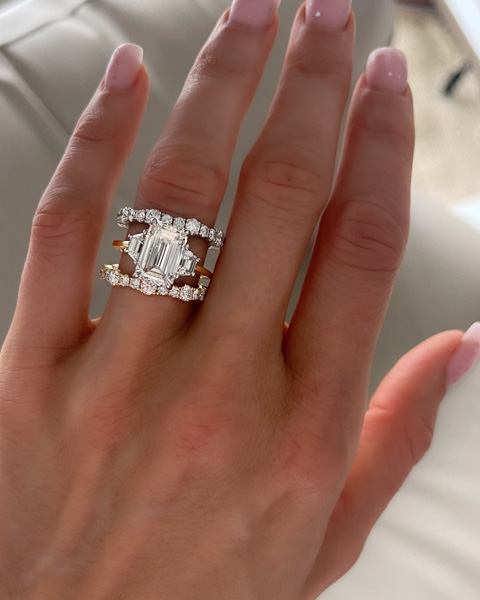
A GOODSTONE Lab Created 4 carat Emerald cut engagement ring with trapezoid side stones
Factors to Consider
When looking for a diamond, there are key criteria such as cut, color clarity and carat weight to take into account in order to find the ideal option. Keeping your budget in mind is also important when making this decision. Sustainability and ethical considerations should be taken into consideration – not just between lab-grown diamonds versus natural ones, but where they originate from too, including their environmental impact on mining operations.
By doing so you can decide which type of diamond fits within your values and preferences best while being cost effective at the same time. Natural diamonds alongside those grown artificially have differences that should all be weighed up carefully prior to purchase ensuring an enjoyable experience overall.
Expert Recommendations
When searching for the ideal diamond, experts can provide advice on the four Cs of diamonds - cut, color, clarity and carat weight. It is also advisable to make sure that you obtain certification from a well-known gemological laboratory in order to guarantee quality. They can assist with choosing which shape and setting are best suited for your needs. Whether it be lab grown or natural. Utilizing professional suggestions will ensure satisfaction when making such an important purchase decision regarding diamonds.
Summary
In the end, lab-grown diamonds possess the same chemical makeup and characteristics as those that are natural. The Federal Trade Commission and Gemological Institute of America have verified this authenticity so it provides a more budget-friendly yet sustainable option when compared to traditional gems. To get an informed choice regarding which is better for you between moissanite, cubic zirconia or grown diamonds vs. natural diamonds simply remember how they differ from each other in regards to properties and composition.
Frequently Asked Questions
Can a jeweler tell if a diamond is lab created?
A skilled gemologist can tell whether a diamond was made in the laboratory or naturally simply by examining it under a microscope. Even though, with just an unaided naked eye, they cannot easily distinguish between lab created and natural diamonds, close inspection of their inclusions will provide essential information about how they came into being. Through microscopic observation, one can determine if the diamond is man-made or not as each type has distinct differences that are noticeable upon closer examination. Lab created stones have special features that make them different from those found due to nature’s forces - making identification easy for any trained expert using their naked eyes and/or microscopes!
What are the disadvantages of lab grown diamonds?
Natural diamonds, which are mined from the ground, have a distinct value and meaning attached to them that lab-created ones cannot match. Although chemical composition may be similar between created and natural stones, their affordability along with lack of rarity prevents these lab-made diamonds from maintaining value over time as real ones do. Thus, while obtaining artificial diamonds might seem more convenient than purchasing naturally sourced gems, they will not provide the same emotional attachment in years to come.
Are lab grown diamonds real diamonds?
Yes. Lab-grown diamonds, which are real and have the same chemical properties and composition as natural diamonds, can be created in a laboratory. By replicating similar conditions to what occurs naturally within an environment that is regulated carefully, these grown diamonds produce results indistinguishable from those of their “natural” counterparts. Lab-crafted gems bear all the characteristics and properties found with regular mined diamond crystals - they just weren’t formed by Mother Nature herself!
How are lab grown diamonds created?
Using advanced technology such as CVD and HPHT, lab grown diamonds are able to mimic the twinkle of a real diamond in an environmentally-friendly way, sometimes using renewable energy. These synthetic diamonds can provide many people with the same shimmer that natural mined stones possess without any negative impacts on their surroundings.
Do lab-grown diamonds hold their value over time?
Lab-grown diamonds have gained traction due to their ethical manufacturing process and competitive prices. Natural diamonds are less easily attained as they usually require an in-store visit or similar form of acquisition. Both lab grown and natural stones maintain value over time. The latter tend to appreciate more significantly than their laboratory counterpart. Lab grown diamond’s growing appeal has proven that it can stand firmly alongside its naturally found peers with regards to endurance through changing economic conditions while also providing a convenient option for buyers looking online or in stores for an alternative choice when purchasing jewellery items containing these gems.






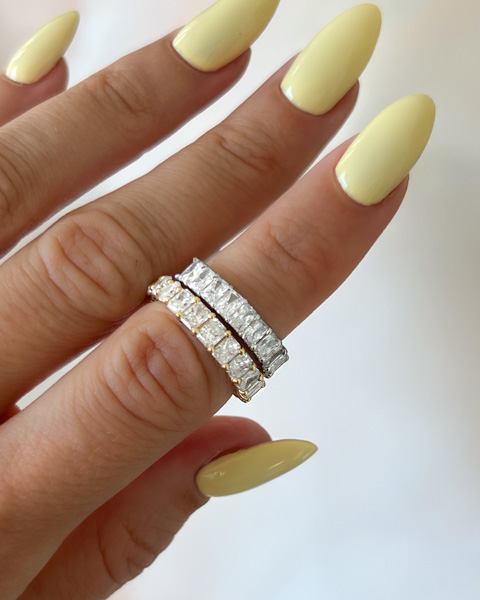





Leave a comment (all fields required)